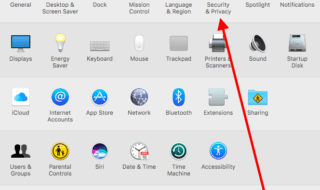As the digital landscape progresses, businesses also encounter evolving cyber threats. In this interconnected world, a robust cybersecurity strategy is not merely an option, but a necessity for any business, irrespective of its size or industry. This guide aims to provide you with comprehensive insights into creating a cybersecurity strategy for your business, covering everything from understanding potential threats and vulnerabilities to implementing proactive measures for prevention and response. Let’s delve into the world of cybersecurity and ensure that your business is well-armed to safeguard its invaluable digital assets.

Contents
Understanding the Cyber Threat Landscape
Before developing a cybersecurity strategy, it is essential to gain an understanding of the different types of threats that businesses may face. Malware, ransomware, phishing, and denial-of-service attacks are some of the most commonly encountered cyber threats today. Businesses must also be aware of the potential for data breaches and identity theft as well as hacker infiltration into networks with malicious intent.
These threats can have serious consequences, including financial losses, reputational damage, and even legal liabilities in the event of a data breach. To stay safe from such security risks, companies must take steps to identify their potential vulnerabilities and develop strategies to protect against them. Noticing signs of suspicious activity is also important, and businesses should be mindful of any unusual activity on their system.
Risk Assessment and Analysis
An effective cybersecurity strategy must begin with a thorough assessment of your company’s security risks and potential vulnerabilities. This involves analyzing the digital assets that need to be protected, such as customer databases, intellectual property, proprietary information, and financial records.
It is also important to assess any third-party services or software used by your business, as they may present their own set of security risks. Once you have identified potential threats and vulnerabilities, you can develop a plan to mitigate them with the right combination of processes, technologies, and people. Perhaps the most important step is to perform regular risk assessments so that any potential flaws in your security strategy can be identified and addressed.
Try Cybersecurity Training

In addition to the technical and organizational measures necessary to secure your business, it is also important to invest in employee training. Employees should be educated about online safety and security best practices, such as passwords, security protocols, and identifying phishing attempts.
Regular training sessions can ensure that employees are up-to-date on the latest trends in cyber threats and know how to safeguard against them. The cyber security awareness training allows your staff to stay vigilant towards potential threats and ensure that they do not compromise on crucial business data. When you know that your employees are well-versed in security procedures, you can be confident in the safety and integrity of your systems.
Giving your employees the tools and knowledge they need to protect your business is essential for a successful cybersecurity strategy.
Implementing Proactive Strategies
Once you have evaluated the risks your business faces, it is time to implement proactive security measures. This involves setting up security protocols for data access and storage, as well as incorporating authentication mechanisms for user access. Additionally, businesses must invest in robust antivirus software and malware scanners to protect against malicious attacks.
Simultaneously, organizations should also contemplate implementing a backup strategy to guarantee the safety and security of data, even in the event of a breach or attack. This entails regularly duplicating vital data on an off-site server or cloud-based storage solution, enabling its restoration in the face of a catastrophe. While an organization may never be fully protected from cyber threats, taking preventive steps can significantly minimize the risks associated with them.
Establishing a Cybersecurity Response Plan
No matter how secure your systems are, incidents and breaches can still occur due to human error or malicious intent. As such, it is essential to have an incident response plan in place that outlines the steps needed for the detection and containment of any security breach. This response plan should cover the necessary reporting procedures and protocols for communication within the organization, as well as with external teams such as law enforcement agencies and IT professionals.
Creating an incident response team composed of up-to-date IT professionals can also be highly beneficial. Having access to experienced staff ready to take quick action in case of a security incident will be invaluable to your business. Whether it be pre-or post-breach, having a reliable team to contact can make all the difference.
Regular Review and Update of your Cybersecurity Strategy

Technology is constantly changing, and so are the cyber threats that businesses face. To stay safe from malicious actors, it is important to regularly review and update your cybersecurity strategy. This ensures that your security measures remain up-to-date with the latest trends in malicious attacks, data breaches, and other digital security risks.
Additionally, employees should be trained on the updated security protocols and measures, ensuring that everyone is aware of how to protect valuable data. For instance, as mobile devices become increasingly commonplace, businesses should consider implementing a Bring Your Own Device (BYOD) policy to ensure the security of data stored on employee-owned devices. When installing or updating any software, it is also important to ensure that all systems have the latest security patches installed.
Leveraging Cybersecurity Technologies and Tools
In addition to human resources and processes, businesses must also invest in the right technologies to secure their systems. Firewalls, intrusion detection systems, encryption solutions, and two-factor authentication are just some of the tools available for protection against cyber threats. Companies must evaluate these options according to their business needs and budget to identify which combination of tools would best suit their security requirements.
Furthermore, many organizations are increasingly leveraging artificial intelligence (AI) and machine learning (ML) technologies to detect and respond to cyber threats in real time. By automating the process of identifying suspicious activity, businesses can quickly address any potential issues before they become major problems.
In this digital age, cybersecurity is not an option but a necessity for businesses of all sizes. A comprehensive cybersecurity strategy involves a thorough risk assessment, regular employee training, proactive security measures, a robust response plan, and the utilization of advanced tools and technologies. By regularly reviewing and updating your cybersecurity policies, you can stay ahead of evolving cyber threats. Nevertheless, remember that the cornerstone of any cybersecurity strategy lies in fostering a culture of security consciousness within the organization. This ensures that everyone, from top-level executives to entry-level employees, takes an active role in safeguarding your business’s digital assets. The digital landscape may be fraught with threats, but with the right approach, you can navigate it securely and confidently.



